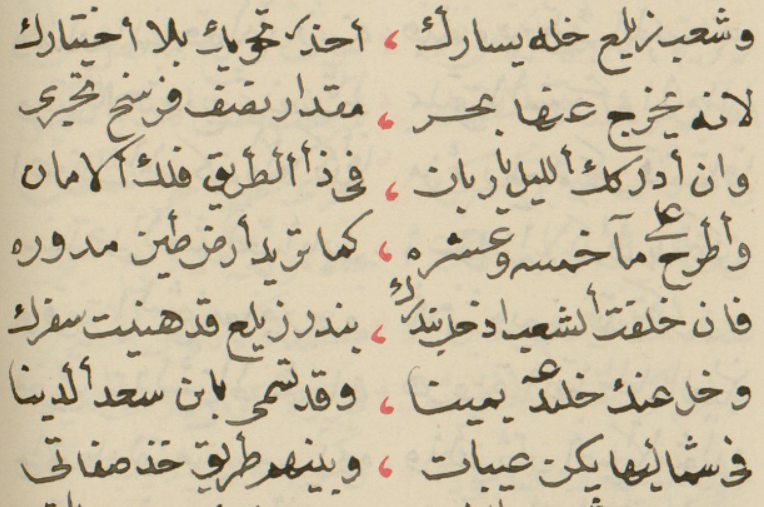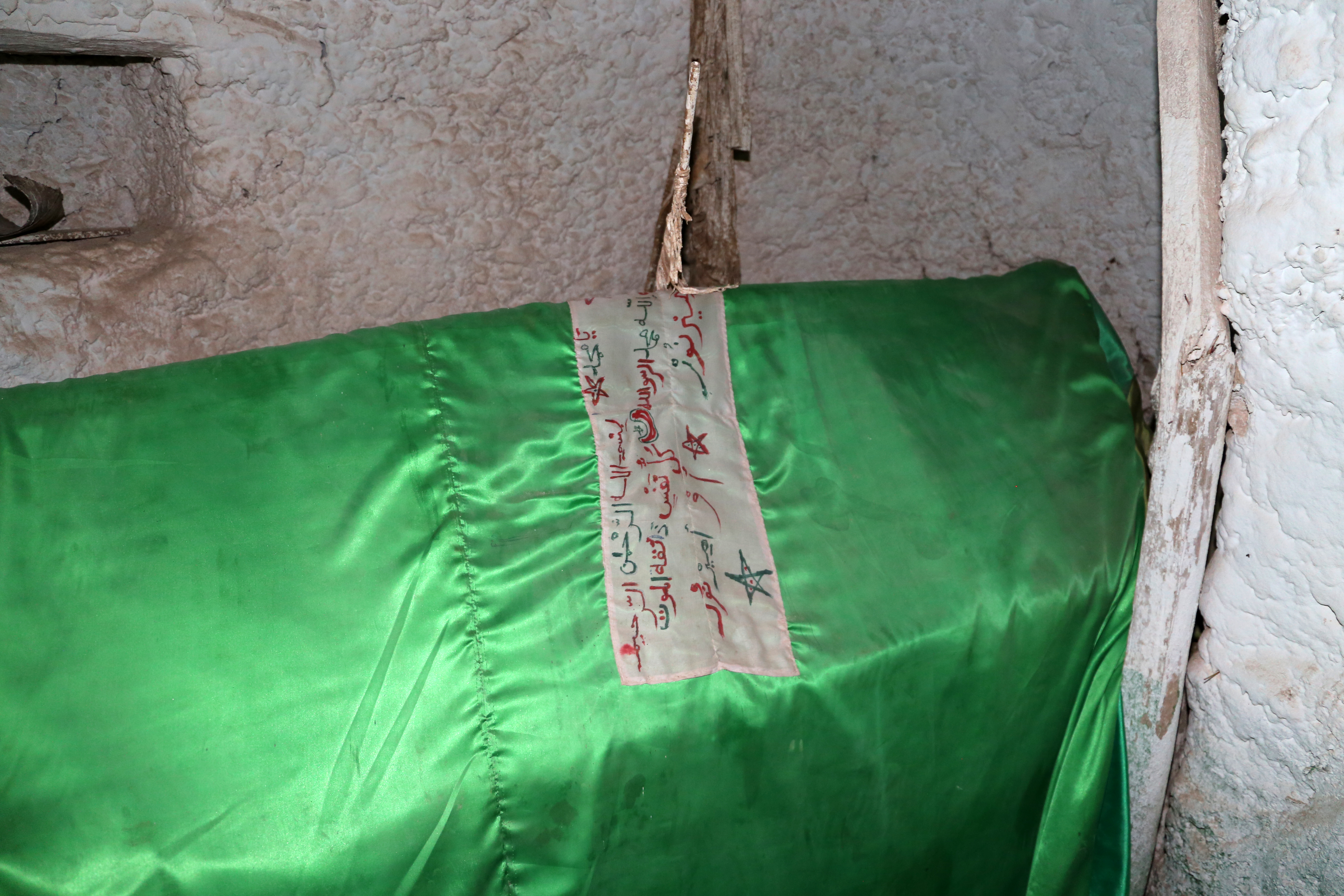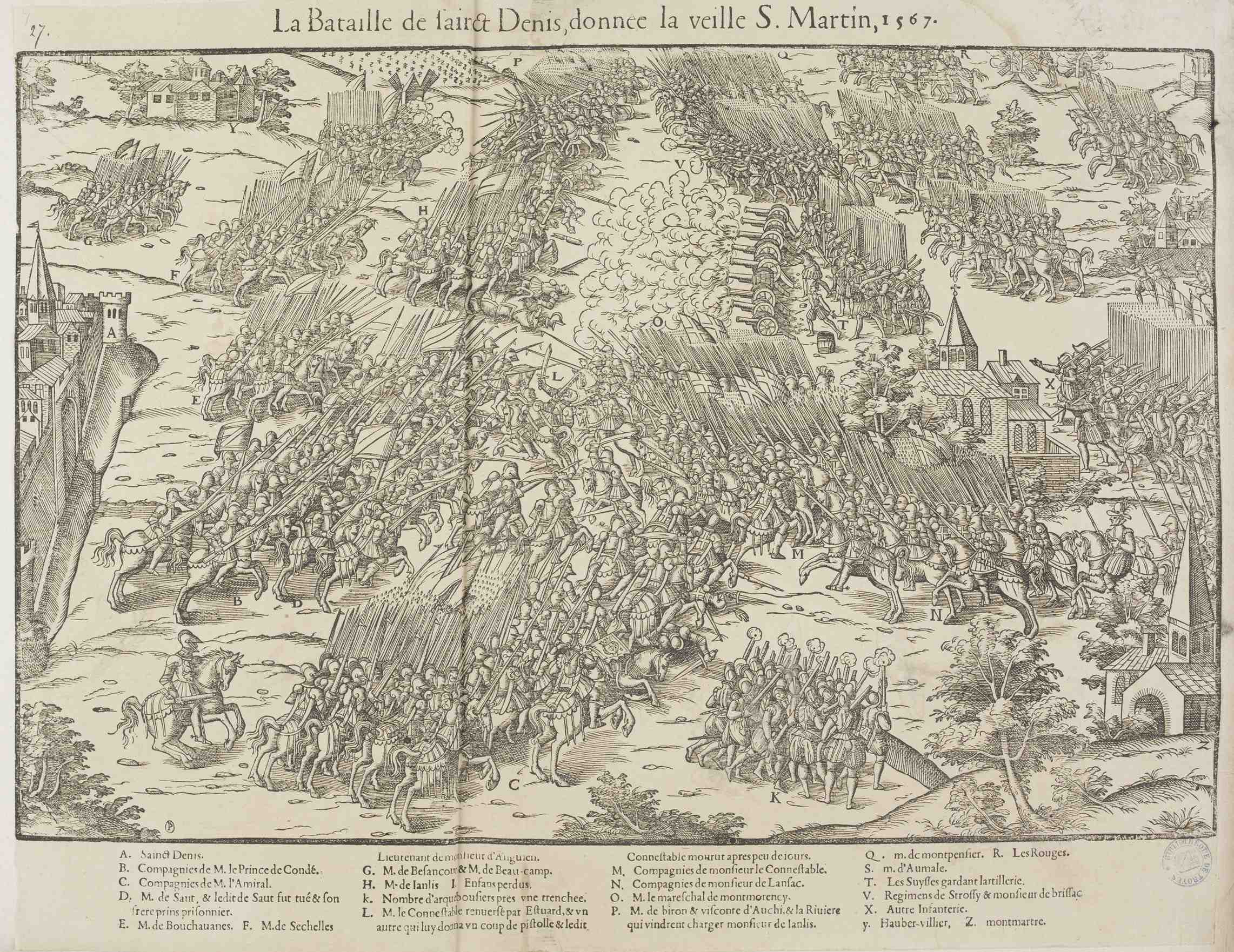|
Uthman The Abyssinian
Uthman the Abyssinian () was the Emir of Harar who ruled the Adal Sultanate, from 1567 to 1569. Reign A former Abyssinian slave of Nur ibn Mujahid, Uthman succeeded him as Emir after Nur's death due to famine in 1567. Uthman adopted a much laxer approach to religion. He reportedly permitted wine drinking and appropriated the considerable wealth Nur had bequeathed for the city's orphans. He also signed an infamous and humiliating peace treaty with the Oromos. The treaty stated that the Oromos can freely enter to the Muslim markets and purchase goods at less than the current market price and that the Oromo refugees that had found asylum in the city should return to their tribes. A local official of Aussa named Jibril soon defected and denounced what he considered Uthman's transgressions against Islamic law. The conflict came to a head when a local Muslim woman who had been taken by the pagan Oromos arrived as a refugee to Aussa. Uthman ordered Jibril to return the woman to the Oro ... [...More Info...] [...Related Items...] OR: [Wikipedia] [Google] [Baidu] |
Emir
Emir (; ar, أمير ' ), sometimes transliterated amir, amier, or ameer, is a word of Arabic origin that can refer to a male monarch, aristocrat, holder of high-ranking military or political office, or other person possessing actual or ceremonial authority. The title has a long history of use in the Arab World, East Africa East Africa, Eastern Africa, or East of Africa, is the eastern subregion of the African continent. In the United Nations Statistics Division scheme of geographic regions, 10-11-(16*) territories make up Eastern Africa: Due to the historical ..., West Africa, Central Asia, and the Indian subcontinent. In the modern era, when used as a formal monarchical title, it is roughly synonymous with "prince", applicable both to a son of a hereditary monarch, and to a reigning monarch of a sovereign principality, namely an emirate. The female, feminine form is emira ( '), a cognate for "princess". Prior to its use as a monarchical title, the term "emir" was ... [...More Info...] [...Related Items...] OR: [Wikipedia] [Google] [Baidu] |
Harar
Harar ( amh, ሐረር; Harari: ሀረር; om, Adare Biyyo; so, Herer; ar, هرر) known historically by the indigenous as Gey (Harari: ጌይ ''Gēy'', ) is a walled city in eastern Ethiopia. It is also known in Arabic as the City of Saints ( ar, مدينة الأَوْلِيَاء). Harar is the capital city of the Harari Region. The ancient city is located on a hilltop in the eastern part of the country and is about five hundred kilometers from the Ethiopian capital Addis Ababa at an elevation of . For centuries, Harar has been a major commercial center, linked by the trade routes with the rest of Ethiopia, the entire Horn of Africa, the Arabian Peninsula, Asia, and through its ports, the outside world. Harar Jugol, the old walled city, was listed as a World Heritage Site in 2006 by UNESCO in recognition of its cultural heritage. Because of Harar's long history of involvement during times of trade in the Arabian Peninsula, the Government of Ethiopia has made it a crim ... [...More Info...] [...Related Items...] OR: [Wikipedia] [Google] [Baidu] |
Adal Sultanate
The Adal Sultanate, or the Adal Empire or the ʿAdal or the Bar Saʿad dīn (alt. spelling ''Adel Sultanate, ''Adal ''Sultanate'') () was a medieval Sunni Muslim Empire which was located in the Horn of Africa. It was founded by Sabr ad-Din II after the fall of the Sultanate of Ifat. The kingdom flourished circa 1415 to 1577.. The sultanate and state were established by the local inhabitants of Zeila. or the Harar plateau. At its height, the polity under Sultan Badlay controlled the territory stretching from Somaliland to the port city of Suakin in Sudan. The Adal Empire maintained a robust commercial and political relationship with the Ottoman Empire. Etymology Adal is believed to be an abbreviation of Havilah. Eidal or Aw Abdal, was the Emir of Harar in the eleventh century. In the thirteenth century, the Arab writer al-Dimashqi refers to the Adal Sultanate's capital, Zeila, by its Somali name "Awdal" ( so, "Awdal"). The modern Awdal region of Somaliland, which ... [...More Info...] [...Related Items...] OR: [Wikipedia] [Google] [Baidu] |
Nur Ibn Mujahid
Nur ibn Mujahid ibn ‘Ali ibn ‘Abdullah al Dhuhi Suha ( Harari: ኑር ኢብን ሙጃሂድ, so, Nuur ibn Mujaahid, ar, نور بن مجاهد; died 1567) was a Muslim Emir of Harar who ruled Sultanate of Harar. He was the primary reason for the construction of the five-gated wall that surrounds the city of Harar. He was known for marrying his uncle's widow, Bati del Wambara, and he also succeeded Imam Ahmad as leader of the Muslim forces fighting Christian Ethiopia. Biography Emir Nur was considered a saint from Harar, Mujahid was called the ''Sahib al-Fath al-Thani'', or "Master of the Second Conquest". When Imam Ahmad, who had led the Muslim conquest of the Ethiopian Highlands, was killed in 1543, the Muslim forces fell back in confusion to Harar. Nur, the dead leader’s sister’s son, married Ahmad ibn Ibrahim al-Ghazi's widow, Bati del Wambara, and undertook to renew the fortunes of the Muslim city, which had been sacked in 1550. Promoted to Emir around 1550-51 ... [...More Info...] [...Related Items...] OR: [Wikipedia] [Google] [Baidu] |
Tahla Abbas
Talha ibn Abbas () was the sultan of the Sultanate of Adal in the Horn of Africa. Reign Talha was the Son of Wazir Abbas, a famed Adalite general and nephew of Imam Ahmed Gurey. After defeating a military force from Harar sent by Uthman the Abyssinian. The religious leaders assembled and appointed him as Sultan. This won the approval of the Harari military and led to much rejoicing in the city. Talha, a man of peace, soon angered the militaristic party, for the local Muslim chronicles state that "he did not leave on a campaign for a jihad." After a short reign of a less than a year and a half, Talha was overthrown and replaced by Nasir ibn Uthman, the son of Uthman the Abyssinian Uthman the Abyssinian () was the Emir of Harar who ruled the Adal Sultanate, from 1567 to 1569. Reign A former Abyssinian slave of Nur ibn Mujahid, Uthman succeeded him as Emir after Nur's death due to famine in 1567. Uthman adopted a much laxer .... Notes {{reflist Sultans of the Adal Sultana ... [...More Info...] [...Related Items...] OR: [Wikipedia] [Google] [Baidu] |
Sunni Islam
Sunni Islam () is the largest branch of Islam, followed by 85–90% of the world's Muslims. Its name comes from the word ''Sunnah'', referring to the tradition of Muhammad. The differences between Sunni and Shia Muslims arose from a disagreement over the succession to Muhammad and subsequently acquired broader political significance, as well as theological and juridical dimensions. According to Sunni traditions, Muhammad left no successor and the participants of the Saqifah event appointed Abu Bakr as the next-in-line (the first caliph). This contrasts with the Shia view, which holds that Muhammad appointed his son-in-law and cousin Ali ibn Abi Talib as his successor. The adherents of Sunni Islam are referred to in Arabic as ("the people of the Sunnah and the community") or for short. In English, its doctrines and practices are sometimes called ''Sunnism'', while adherents are known as Sunni Muslims, Sunnis, Sunnites and Ahlus Sunnah. Sunni Islam is sometimes referr ... [...More Info...] [...Related Items...] OR: [Wikipedia] [Google] [Baidu] |
Asaita
Asaita ( am, አሳይታ, Asayəta, aa, Aysaqiita), also known as Aussa (Awsa), is a town in northeastern Ethiopia, and until 2007 served as the capital of the Afar Region of Ethiopia. Located in the Afambo woreda, part of the region's Awsi Rasu zone, the town has a latitude and longitude of and an elevation of . Asaita was briefly the capital of the Adal Sultanate and Imamate of Aussa as well as seat of the Aussa Sultanate, the chief Afar monarchy, but is south by unpaved road from Awash– Asseb highway. A telephone line from Kombolcha to Asaita was in operation in 1964."Local History in Ethiopia" (pdf) The Nordic Africa Institute website (accessed 21 November 2007) The town of |
Oromo People
The Oromo (pron. Oromo: ''Oromoo'') are a Cushitic ethnic group native to the Oromia region of Ethiopia and parts of Northern Kenya, who speak the Oromo language (also called ''Afaan Oromoo'' or ''Oromiffa''), which is part of the Cushitic branch of the Afroasiatic language family. They are the largest ethnic group in Ethiopia and represent a large portion of Ethiopia's population. The Oromo people traditionally used the '' gadaa'' system as the primary form of governance.Harold G. MarcuA History of Ethiopia University of California Press (1994) pp. 55 Google Books A leader is elected by the ''gadaa'' system and their term lasts eight years, with an election taking place at the end of those eight years. Although most modern Oromos are Muslims and Christians, about 3% practice Waaqeffanna, the native ancient monotheistic religion of Oromos. Origins and nomenclature The Oromo people are one of the oldest cushitic peoples inhabiting the Horn of Africa, as there is still no ... [...More Info...] [...Related Items...] OR: [Wikipedia] [Google] [Baidu] |
Abun Adashe
''Garad'' Abun Adashe ( Harari: አቦኝ አደሼ) was a Harari Emir of the Adal Sultanate. Reign Garad Abun Adashe ruled from 1519 to 1525 and led a campaign against the Walashma dynasty. Adashe campaigned against Sultan Abu Bakr ibn Muhammed; however he was decisively defeated at Harar his own base and Abu Bakr successfully invaded Harar with the assistance of Somali militias. Imam Ahmed Al Gurey served as an advisor and respected infantryman for Adashe against the Walashma forces. After his loss, Ahmed Gurey avenged his sultan's death and killed Abu Bakr. Garad Abun's son Garad Abass succeeded his father and supported Imam Ahmed in his conquest by leading Jihad after Ahmed's death. See also *Walashma dynasty *Garad Garad ( Harari: ገራድ, , , Oromo: ''Garaada'') is a term used to refer to a clan leader or regional administrator. It was used primarily by Muslims in the Horn of Africa that were associated with Islamic states, most notably the Adal Sultanate ... Refer ... [...More Info...] [...Related Items...] OR: [Wikipedia] [Google] [Baidu] |
Emirs Of Harar
The Emirate of Harar was a Muslim kingdom founded in 1647 when the Harari people refused to accept Imām ʿUmardīn Ādan as their ruler and broke away from the Imamate of Aussa to form their own state under `Ali ibn Da`ud. Prior to its invasion by Shewan forces under Menelik II, the League of Nations noted that the Harar kingdom made up the area between the rivers Awash and Shebelle while the Ogaden was a tributary state. Originally however the Harar Emirate composed of present-day Somalia and to south of eastern Ethiopia including the Arsi Province. Harar also dominated trade in Shewa. Harar's influence began shrinking in the nineteenth century possibly due to lack of resources and famine. Like all Muslim states in the area, the Emirate of Harar was technically under the protection of the Ottoman Empire. Egypt annexed the Emirate of Harar in 1875. The British Empire defeated the Khedivate and occupied its territories in 1882 including Harar, but the British agreed to evacuate ... [...More Info...] [...Related Items...] OR: [Wikipedia] [Google] [Baidu] |
1567 Deaths
__NOTOC__ Year 1567 ( MDLXVII) was a common year starting on Wednesday (link will display the full calendar) of the Julian calendar. Events January–June * January – A Spanish force under the command of Captain Juan Pardo establishes Fort San Juan, in the Native American settlement of Joara. The fort is the first European settlement in present-day North Carolina. * January 20 – Battle of Rio de Janeiro: Portuguese forces under the command of Estácio de Sá definitively drive the French out of Rio de Janeiro. * January 23 – After 45 years' reign, the Jiajing Emperor dies in the Forbidden City of China. * February 4 – The Longqing Emperor ascends the throne of the Ming Dynasty. * February 10 – Henry Stuart, Lord Darnley, husband of Mary, Queen of Scots, is murdered at the Provost's House in Kirk o' Field, Edinburgh. * March 13 – Battle of Oosterweel: A Spanish mercenary army surprises and kills a band of rebels near Antwerp in ... [...More Info...] [...Related Items...] OR: [Wikipedia] [Google] [Baidu] |
16th-century Monarchs In Africa
The 16th century begins with the Julian year 1501 ( MDI) and ends with either the Julian or the Gregorian year 1600 ( MDC) (depending on the reckoning used; the Gregorian calendar introduced a lapse of 10 days in October 1582). The 16th century is regarded by historians as the century which saw the rise of Western civilization and the Islamic gunpowder empires. The Renaissance in Italy and Europe saw the emergence of important artists, authors and scientists, and led to the foundation of important subjects which include accounting and political science. Copernicus proposed the heliocentric universe, which was met with strong resistance, and Tycho Brahe refuted the theory of celestial spheres through observational measurement of the 1572 appearance of a Milky Way supernova. These events directly challenged the long-held notion of an immutable universe supported by Ptolemy and Aristotle, and led to major revolutions in astronomy and science. Galileo Galilei became a champion ... [...More Info...] [...Related Items...] OR: [Wikipedia] [Google] [Baidu] |
.jpg)







